The US Military attempted a new kind of nuclear explosions on July 26, 1946. The nuclear tests were carried out by a joint task force of US Navy and Army. The mission started off by suspending a nuclear device 90 feet under the surface of the water.
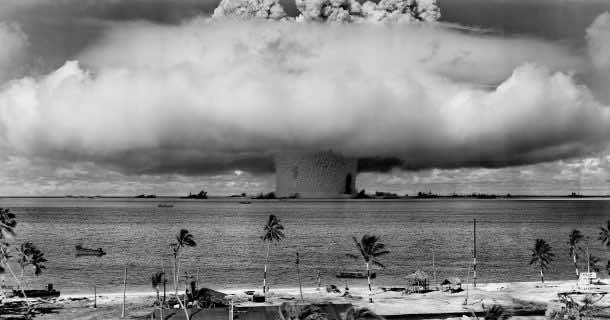
Someone had a twisted sense of humour to christen the 21-kiloton atomic bomb as the Helen of Bikini. The nuclear device was suspended in a part of the Marshall Islands called Bikini Atoll, a relatively isolated region of land and coral around which dozens of target ships were scattered as shown below.
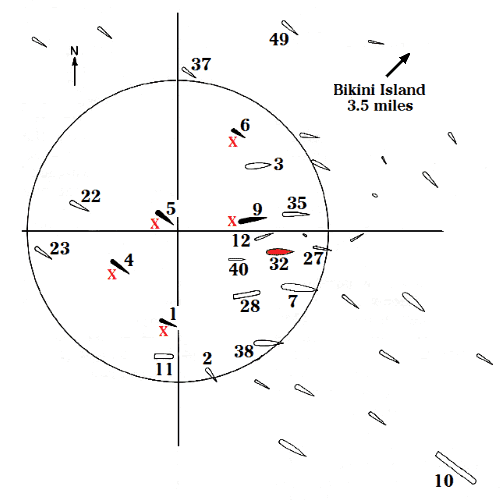
This test was the Navy’s attempt to reinforce its importance in the wake of the successful missions conducted by the Air Force where it rained explosives from the sky and created havoc in the enemy territory. The Navy wanted to prove that its ships were well-equipped to endure a nuclear explosion. However, the underwater nuclear test was so controversial that even the nuclear scientists questioned the purpose of this test and deemed it more of a show than an actual scientific inquisition.
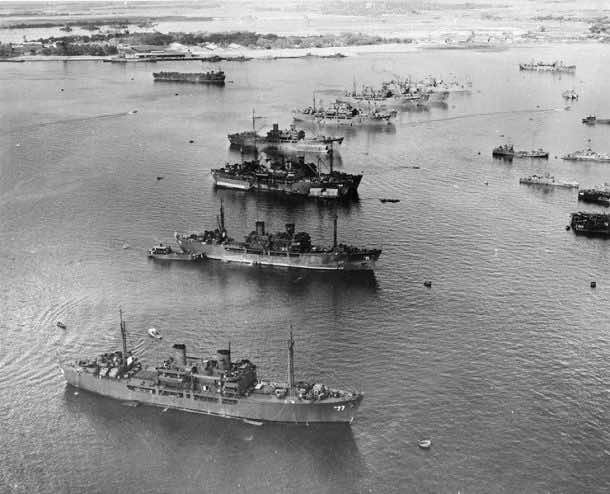
The Helen of Bikini blew up to create a huge bubble of hot gas under water. The giant hot gas bubble hit the seabed within a few seconds of the blast, creating a massive depression about 30 feet deep and 1800 feet wide.
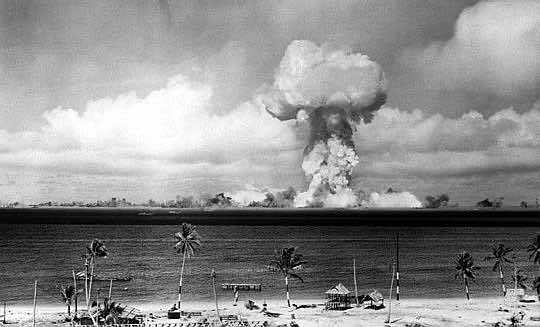
Simultaneously, the water surface exploded into a half-mile-wide water column of 2 million tonnes rising to 5000 feet in the air. Within seconds, the radioactive condensation enveloped the water column, and the characteristic mushroom cloud of gas appeared in the sky.
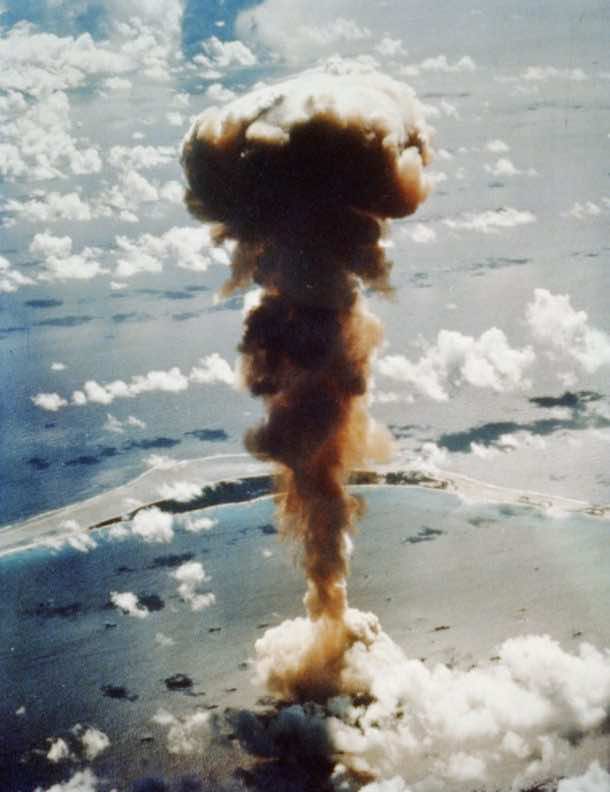
The Burial at Sea of the Navy Vessels
The LSM-60 was the first victim of the blast as the bomb had been suspended underneath its hull. The ship was blasted out of existence, and only a few fragments of it were ever recovered from the decks of the other ships.
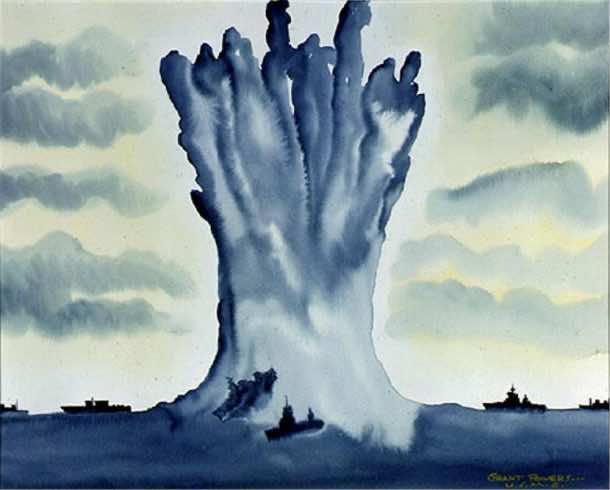
Arkansas was the first battleship casualty, sunk by the nuclear bomb. An oil barge named YO-160 and an auxiliary vessel ARDC-13 were next to go down. The aircraft carrier Saratoga sank seven and a half hours after the initial explosion.
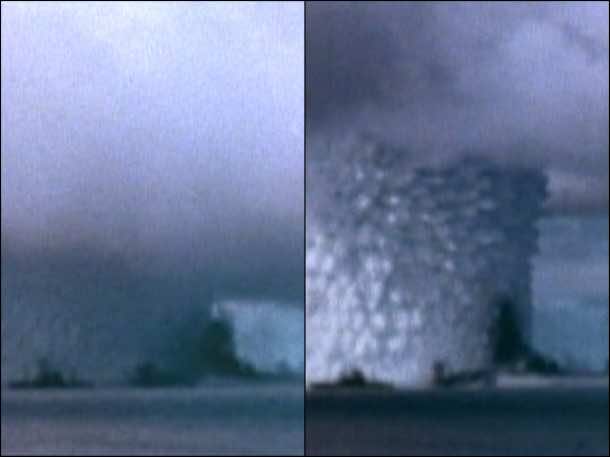
A captured Japanese battleship Nagato took four days to sink while three submarines submerged in the water were also destroyed. After the nuclear test, Marshal Island was aptly named the Graveyard of Ships.
The Aftermath of the Baker Incident
If anything, the first underwater nuclear test, the Baker event, forced the military to acknowledge the remarkable power of the nuclear arsenal. Navy’s initial plan was to decontaminate the target ships and return them to the fleet.
Yet, the Navy leadership thought the vessels could be recovered. The Rear Adm. Thorvald Solberg was in charge of decontamination. He ordered the clean-up crew to tow Saratoga to the shore, but as the crew closed in, they realised that the radiation level was much higher than lethal, and so they watched from afar as the vessel went under.
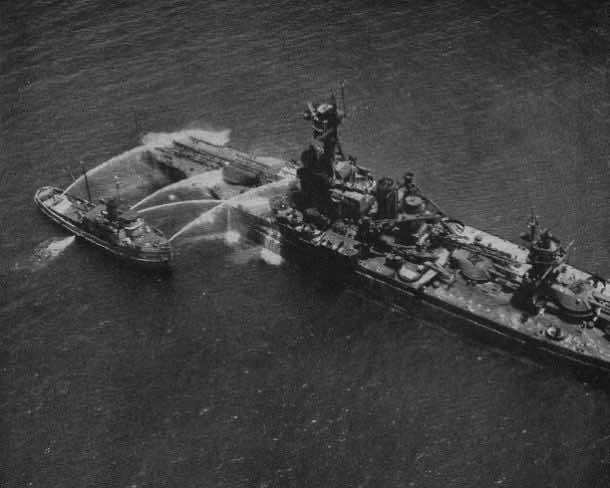
The crew tried to wash the ships using foam and salt water in their attempt to scrub out the radiation. However, all their efforts went in vain, and the crew kept exceeding the daily allotment of radiation exposure.
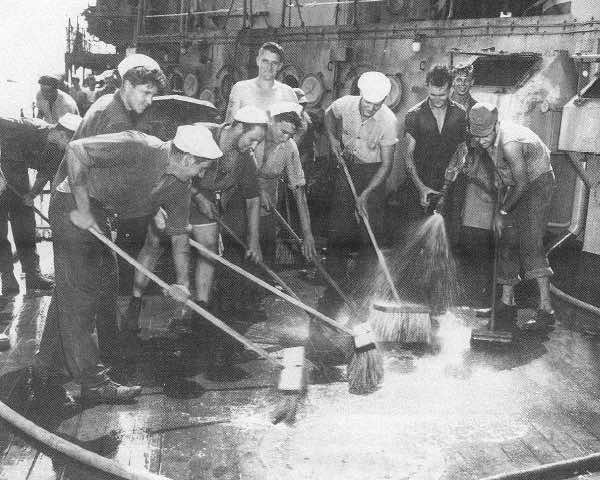
Radiation was everywhere; even the mussels and algae clinging to the clean ships were a source of concentrated radiation exposure. The image below shows a surgeonfish so radioactive that it makes its own X-ray.
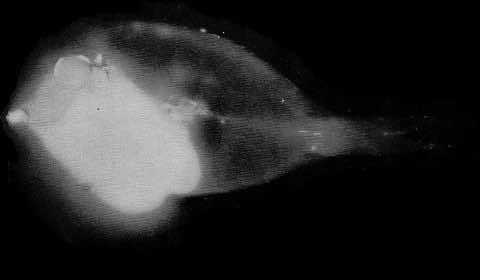
The only way Navy could have decontaminated the ships was to strip them off of all the wooden pieces and treat the brass and copper fixtures of the vessels with nitric acid.
Soon, it became apparent that the decontamination of ships entirely soaked in radiation was a bygone conclusion. Thus, the Marshall Islands turned into a cemetery for the fleet of irradiated ships while the U.S. and the Soviet Union remained averse to the idea of an underwater nuclear test for a long time.
Six severely ships were sunk in the Bikini lagoon while the others were dragged 200 miles to Kwajalein. Some of the ships were sent to Pearl Harbor, Seattle or San Francisco for further examination. 36 vessels were towed out to the deep sea and were allowed to descend into the depths of the lagoon.
The ship named Prinz Eugen capsized in shallow waters and its wreck still lies in the water with its propellers pointing upwards towards the sky. Learn more about the test in this video:
The atmospheric nuclear blasts showed a different behaviour to the underwater nuclear explosion because the radioactive emission was spread over a wide area. On the other hand, the underwater nuclear explosion concentrated the radiation in the water mist that fell back into the water body and on the ships. Thus, even the ships that endured the initial nuclear explosion were 20 times more radioactive than the lethal level.
The Rest of the Tests
After the Baker test, it took one decade for the military to try another underwater nuclear test. The next underwater nuclear test was carried out in 1955 during the Operation Wigwam.
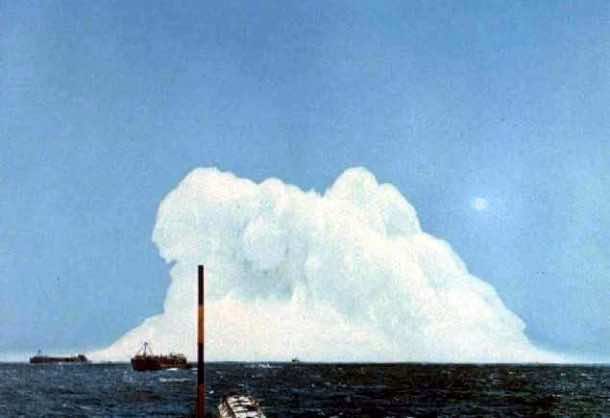
The bomb was installed 500 nautical miles west of San Diego, 200 feet below the surface of the ocean. The test was meant to determine the feasibility of deploying a nuclear weapon from a surface ship. The USS Tawasa carrying scientists aboard the vessel was severely damaged. Although the military asserted that no one was exposed to a lethal level of radiation, a few people aboard the ship died early of cancer and their families accused the test.
The US military conducted two more nuclear tests underwater. During Operation Hardtack in 1958, an atomic bomb much smaller than the previous tests was detonated under water.
The last test named Swordfish was conducted in 1962, just before PTBT (Partial Test Ban Treaty) became effective. Reportedly, this test was the most successful one and went without a hitch.


